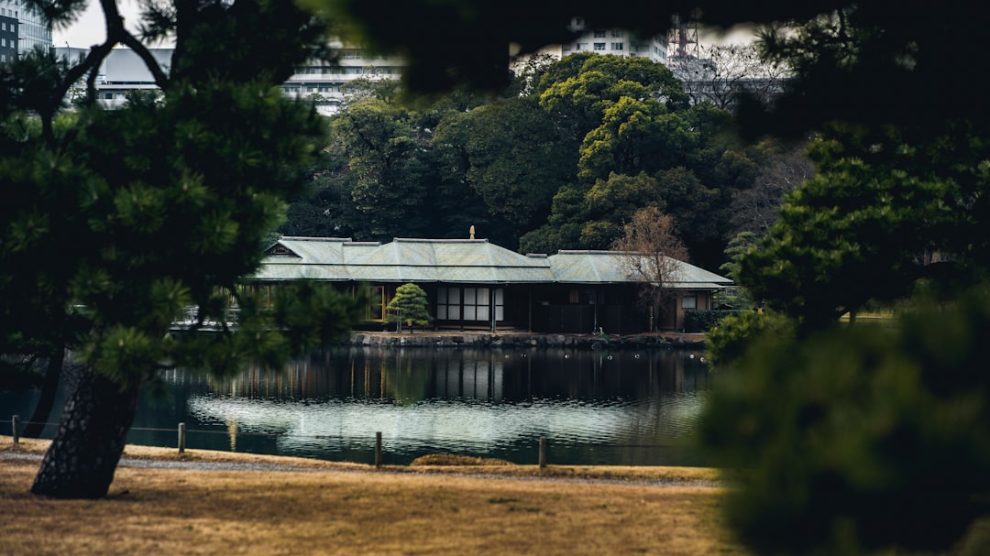As I delve into the world of architecture, I find myself increasingly captivated by the principles of Taoism and their relevance in contemporary design. Taoism, an ancient Chinese philosophy, emphasizes living in harmony with the Tao, or the fundamental nature of the universe. This philosophy extends beyond mere spirituality; it offers a framework for understanding how to create spaces that resonate with the natural world and promote well-being.
In modern architecture, where the rush of urbanization often overshadows the need for balance and tranquility, integrating Taoist principles can lead to designs that foster a deeper connection between people and their environments. Incorporating Taoist principles into architecture is not merely about aesthetics; it is about creating spaces that reflect a holistic understanding of life. The essence of Taoism lies in its focus on harmony, balance, and the interconnectedness of all things.
As I explore this integration, I am reminded that architecture has the power to influence our emotions, behaviors, and overall quality of life. By embracing these ancient teachings, architects can design buildings that not only serve functional purposes but also nurture the human spirit and promote a sense of peace and belonging.
Key Takeaways
- Taoist principles emphasize harmony, balance, and nature, which can be applied to modern architecture to create spaces that promote well-being and tranquility.
- The concept of harmony in Taoism is reflected in architectural design through the use of natural materials, sustainable practices, and creating a sense of balance and flow within the built environment.
- Taoist architecture is influenced by nature, with an emphasis on incorporating natural elements such as water, plants, and natural light to create a sense of harmony and balance within the built environment.
- Feng Shui, an ancient Chinese practice that focuses on creating harmonious environments, is often used in modern architectural design to enhance the flow of energy and create a sense of balance and harmony within a space.
- Taoist-inspired architecture embraces simplicity and flow, with a focus on creating spaces that are uncluttered, open, and allow for a natural flow of energy and movement within the built environment.
The Concept of Harmony in Taoism and its Application in Architecture
Harmony is a cornerstone of Taoist philosophy, representing the ideal state of balance between opposing forces. In architecture, this concept translates into designs that seek equilibrium between form and function, aesthetics and utility. As I reflect on this principle, I recognize that achieving harmony in architectural design requires a thoughtful approach to materials, spatial organization, and the relationship between indoor and outdoor environments.
It is about creating spaces that feel cohesive and inviting, where every element contributes to a greater whole. In practical terms, applying the concept of harmony in architecture involves careful consideration of proportions, symmetry, and the flow of space. I have observed that buildings designed with these principles in mind often evoke a sense of calm and serenity.
For instance, the use of natural materials such as wood and stone can create a tactile connection to the earth, while large windows that frame views of nature can enhance the feeling of openness and tranquility. By prioritizing harmony in design, architects can create environments that resonate with the human experience, fostering a sense of belonging and well-being.
The Influence of Nature and Balance in Taoist Architecture

Nature plays a pivotal role in Taoist philosophy, serving as both a source of inspiration and a guiding principle for architectural design. As I explore this relationship, I am struck by how deeply interconnected our built environments can be with the natural world. In Taoist architecture, there is an emphasis on creating spaces that reflect the beauty and rhythms of nature.
This approach encourages architects to consider not only the physical landscape but also the seasonal changes and ecological systems that surround their designs. Incorporating elements of nature into architectural design can take many forms. For instance, I have seen buildings that seamlessly blend into their surroundings through the use of green roofs, living walls, and natural landscaping.
These features not only enhance the aesthetic appeal of a structure but also promote biodiversity and sustainability. Furthermore, by designing spaces that encourage interaction with nature—such as courtyards, gardens, and terraces—architects can foster a deeper appreciation for the environment among occupants. This connection to nature is essential for cultivating balance in our lives, reminding us of our place within the larger tapestry of existence.
The Use of Feng Shui in Modern Architectural Design
Feng Shui, an ancient Chinese practice rooted in Taoist philosophy, focuses on the arrangement of space to promote harmony and positive energy flow. As I delve into modern architectural design, I find Feng Shui principles increasingly relevant in creating environments that support well-being and productivity. The practice emphasizes the importance of orientation, layout, and the use of natural elements to enhance the flow of chi, or life force energy.
By integrating these principles into contemporary designs, architects can create spaces that feel balanced and nurturing. In my exploration of Feng Shui’s application in modern architecture, I have come across various techniques that can be employed to optimize energy flow within a building. For example, positioning entrances to face favorable directions can invite positive energy into a space, while ensuring that pathways are clear and unobstructed promotes ease of movement.
Additionally, incorporating water features—such as fountains or ponds—can enhance tranquility and create a soothing atmosphere. By embracing Feng Shui principles, architects can design spaces that not only meet functional needs but also foster a sense of harmony and well-being for their occupants.
Incorporating Simplicity and Flow in Taoist-inspired Architecture
Simplicity is another fundamental aspect of Taoist philosophy that resonates deeply with me as I consider architectural design. In a world often characterized by complexity and excess, embracing simplicity can lead to more meaningful and functional spaces. Taoist-inspired architecture prioritizes clean lines, uncluttered spaces, and an overall sense of calmness.
This approach encourages architects to strip away unnecessary elements and focus on what truly matters—creating environments that support human connection and well-being. Flow is equally important in Taoist-inspired architecture. The concept refers to how people move through a space and interact with their surroundings.
As I observe various architectural designs, I notice that spaces with a strong sense of flow often feel more inviting and harmonious. This can be achieved through open floor plans that encourage movement between rooms or through thoughtful transitions between indoor and outdoor areas. By prioritizing simplicity and flow in design, architects can create environments that promote ease of use while fostering a sense of tranquility.
Creating Spaces for Meditation and Reflection in Modern Buildings

In our fast-paced world, the need for spaces dedicated to meditation and reflection has never been more critical. As I explore modern architectural practices influenced by Taoism, I recognize the importance of designing environments that facilitate introspection and mindfulness. These spaces serve as sanctuaries where individuals can retreat from the chaos of daily life and reconnect with themselves on a deeper level.
Creating such spaces requires careful consideration of light, sound, and materials. Natural light plays a vital role in fostering a calming atmosphere; therefore, incorporating large windows or skylights can enhance the experience of being present in the moment. Additionally, using soft textures and natural materials can create a tactile connection to the environment that promotes relaxation.
As I envision these meditation spaces within modern buildings, I am reminded that they should be designed not only for individual reflection but also for communal gatherings where people can share their experiences and insights.
Embracing the Concept of Wu Wei in Architectural Design
Wu Wei, often translated as “non-action” or “effortless action,” is a central tenet of Taoism that encourages individuals to align with the natural flow of life rather than forcing outcomes. In architectural design, embracing Wu Wei means creating spaces that feel organic and intuitive rather than contrived or overly engineered. As I reflect on this concept, I realize that successful architecture often emerges from an understanding of context—how a building interacts with its environment and responds to the needs of its occupants.
In practical terms, applying Wu Wei in architectural design involves allowing for flexibility and adaptability within spaces. This could mean designing multifunctional areas that can easily transform based on user needs or incorporating elements that respond to environmental changes—such as adjustable shading devices or operable windows for natural ventilation. By embracing this philosophy, architects can create buildings that feel alive and responsive to their surroundings, ultimately enhancing the experience for those who inhabit them.
Case Studies of Modern Buildings that Embrace Taoist Principles
As I explore various case studies of modern buildings that embody Taoist principles, I am inspired by how these designs reflect harmony with nature and promote well-being. One notable example is the Chengdu Tianfu International Airport in China, which integrates natural elements throughout its design. The airport features expansive green spaces both inside and outside its terminals, creating a serene environment for travelers while emphasizing sustainability.
Another compelling case study is the Sanya Mangrove Tree Resort in Hainan Province. This resort exemplifies the principles of Feng Shui through its layout and orientation, which are designed to maximize positive energy flow while minimizing disruptions from external factors. The use of local materials further enhances its connection to nature while providing guests with an immersive experience that encourages relaxation and rejuvenation.
In conclusion, as I reflect on my journey through the intersection of Taoism and modern architecture, I am reminded of the profound impact these principles can have on our built environments. By embracing concepts such as harmony, balance with nature, simplicity, flow, meditation spaces, Wu Wei, and Feng Shui, architects have the opportunity to create designs that resonate deeply with human experiences. These principles not only enhance aesthetic appeal but also foster well-being and connection—reminding us all of our place within the larger tapestry of existence.









Add Comment